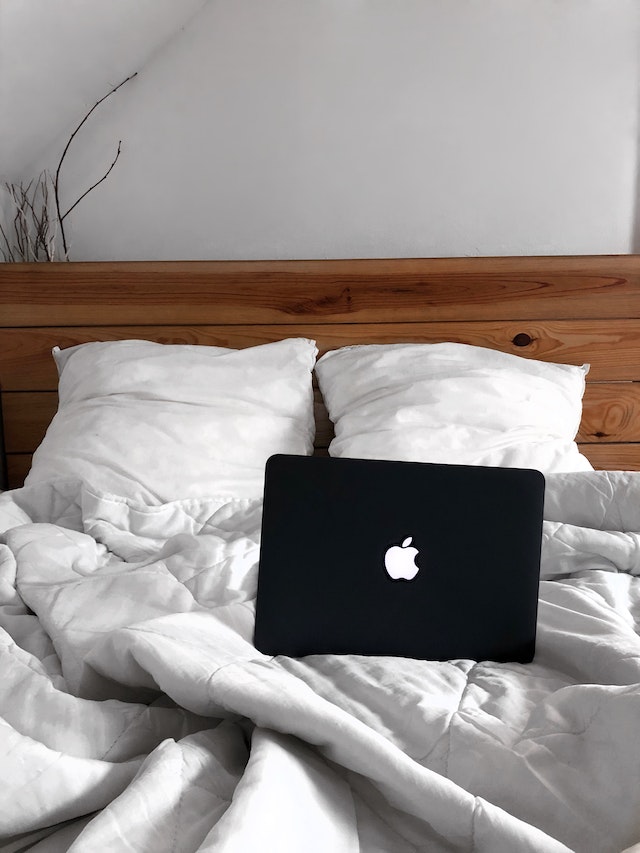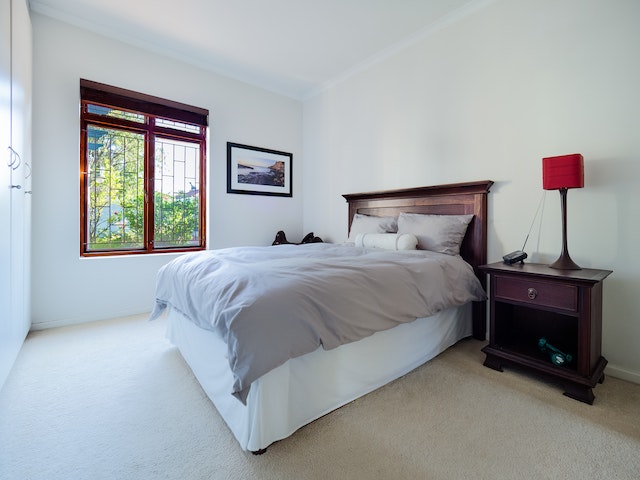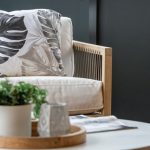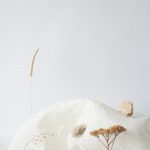Bedding, also known as bedclothes or bed linen, is essential in our day-to-day lives. Not only does it protect our mattresses and make our beds more comfortable, but it also plays a significant role in our health and well-being. This article explores the different types of bedding, materials, how to care for them, and how to choose the best bedding for you.
Contents
Types of Bedding
Sheets
- Flat Sheet: Lies between the sleeper and the blanket, comforter, or quilt.
- Fitted Sheet: Designed to fit the mattress, with elastic corners to hold it in place.
Pillowcases
- Protect and decorate the pillows.
Blankets
- Provide warmth and can be made from various materials, such as wool, cotton, and synthetics.
Comforters and Quilts
- Thick, often fluffy bed coverings that provide a lot of warmth.
Duvets and Duvet Covers
- A duvet is a type of blanket that is filled with down, feathers, or synthetic fibers. The cover is removable and washable.
Bedspreads
- Decorative, and often quilted, blankets that cover the entire bed.
Mattress Pads and Protectors
- Provide an extra layer of comfort and protection for the mattress.
Materials
Cotton
- Highly popular due to its breathability and softness. Percale and sateen are two common weaves.
Linen
- Known for being breathable and moisture-wicking. It becomes softer over time with each wash.
Silk
- Luxurious and smooth, silk is hypoallergenic and can be great for sensitive skin.
Polyester
- Durable and affordable, but less breathable than natural fibers.
Blends (Cotton-Polyester, etc.)
- These combine the benefits of multiple materials.
Wool
- Excellent for blankets due to its natural insulating properties.
Bamboo
- Eco-friendly and extremely soft, bamboo is known for its anti-microbial properties.
How to Choose
Thread Count
- Higher thread count often signifies higher quality, but it is not the only factor.
Weave
- The weave affects the feel and appearance of the sheets. Sateen is smooth and silky, while percale is crisp and cool.
Season
- Consider seasonal needs – flannel for winter, linen for summer, etc.
Allergies
- If you have allergies, consider hypoallergenic materials like silk, organic cotton, or bamboo.
Budget
- Set a budget and look for the best quality within that range.
Care and Maintenance
Washing
- Read the care labels and follow the instructions. Typically, bedding should be washed in warm or cold water.
Drying
- Natural air-drying is usually the best, but some materials can be tumble dried on low.
Ironing
- Some materials, like cotton, may require ironing. Avoid ironing synthetic fibers as they may melt.
Replacement
- Experts recommend replacing sheets and pillowcases every 1-2 years and comforters every 5-10 years.
Storage
- Store bedding in a cool, dry place. Avoid plastic bags as they can trap moisture and lead to mildew.
Bedding is more than just a functional aspect of our lives; it contributes significantly to the quality of our sleep, which in turn affects our overall health and well-being. By understanding the different types of bedding materials available and how to care for them, you can make informed decisions and create the most comfortable and inviting sleep environment possible.
Remember that the best bedding is the one that meets your personal comfort preferences, health needs, and budget. It’s worth investing in quality bedding that will provide you with a good night’s sleep for years to come.
What’s included in bedding?
Bedding encompasses a variety of items that are designed to keep you comfortable while you sleep, as well as to enhance the overall aesthetics of your bedroom. Below is a detailed list of items commonly included in bedding, along with their functions:
Sheets
- Flat Sheet: A large, rectangular piece of fabric that lies between the sleeper and the blanket or comforter. It keeps the upper layers of bed coverings clean and is sometimes referred to as a “top sheet.”
- Fitted Sheet: Designed to fit tightly over the mattress. It has elastic corners or edges to hold it in place and provides a clean and soft surface for the sleeper to lie on.
Pillowcases
- Pillowcases are protective and decorative covers for pillows. They are typically made from the same material as the sheets and are essential for keeping the pillow clean.
Blankets
- Blankets are large pieces of woven fabric that are used for warmth. They come in various materials, including cotton, wool, and synthetic fibers.
Comforters and Quilts
- Comforters are thick, fluffy blankets filled with a synthetic fiber or down that provides insulation. They are stitched to keep the filling evenly distributed.
- Quilts are similar to comforters but are often more decorative and have three layers: a top layer of fabric, a middle layer of batting, and a bottom layer of fabric.
Duvets and Duvet Covers
- A Duvet is similar to a comforter but is usually plain white and designed to be used with a duvet cover.
- Duvet Covers are protective layers that slip over the duvet and have a closure. They are easy to remove and wash, which helps to keep the duvet clean.
Bedspreads
- Bedspreads are large, decorative coverings that span the entire bed and extend to the floor. They are often used as the top layer of bedding for a polished look.
Mattress Pads and Protectors
- Mattress Pads add an extra layer of comfort and protection to the mattress. They typically have a layer of padding and are fitted like a sheet.
- Mattress Protectors are designed to protect the mattress from stains, spills, and allergens. They are often waterproof and hypoallergenic.
Bed Skirts
- Bed skirts, also known as dust ruffles or valances, are decorative pieces of fabric placed between the mattress and box springs or bed frame. They hang down to the floor and conceal the space under the bed.
Pillow Shams
- Pillow shams are decorative covers for pillows, often with a flange or decorative border. Unlike pillowcases, which are functional and designed for sleeping, shams are primarily for decoration.
Throw Blankets and Pillows
- Throw Blankets are smaller blankets that are used for decoration or extra warmth.
- Throw Pillows are small, decorative pillows that are placed on top of the bed for aesthetic purposes.
Bed Runners
- Bed runners are narrow, decorative strips of fabric that are placed across the foot of the bed. They are primarily used in hotels but are also becoming popular in home décor.
Bedding sets can include a variety of these components, and what you choose depends on your personal preferences, climate, and desired level of comfort and style. Some people prefer a minimalist approach with just sheets, a comforter, and pillowcases, while others enjoy a more lavish setup with all the decorative elements included. The choice is up to you, and the options are nearly endless for creating a comfortable and inviting sleep environment.
A Standard Chart Table of Bedding
Here’s a standard chart table of common bedding sizes for mattresses, sheets, and duvet covers, listed in both inches and centimeters. Please note that sizes can vary slightly between manufacturers, so it is always best to check specific dimensions before making a purchase. The following chart is based on U.S. sizes, which may differ from other countries.
Bedding Size Chart
| Item | Twin (in) | Twin XL (in) | Full/Double (in) | Queen (in) | King (in) | Cal King (in) |
|---|---|---|---|---|---|---|
| Mattress | 39 x 75 | 39 x 80 | 54 x 75 | 60 x 80 | 76 x 80 | 72 x 84 |
| Flat Sheet | 66 x 96 | 66 x 102 | 81 x 96 | 90 x 102 | 108 x 102 | 108 x 102 |
| Fitted Sheet | 39 x 75 | 39 x 80 | 54 x 75 | 60 x 80 | 76 x 80 | 72 x 84 |
| Duvet Cover | 68 x 86 | 68 x 90 | 80 x 86 | 88 x 92 | 104 x 92 | 104 x 96 |
| Comforter | 66 x 86 | 66 x 90 | 80 x 90 | 88 x 94 | 104 x 94 | 104 x 100 |
| Item | Twin (cm) | Twin XL (cm) | Full/Double (cm) | Queen (cm) | King (cm) | Cal King (cm) |
|---|---|---|---|---|---|---|
| Mattress | 99 x 191 | 99 x 203 | 137 x 191 | 152 x 203 | 193 x 203 | 183 x 213 |
| Flat Sheet | 168 x 244 | 168 x 259 | 206 x 244 | 229 x 259 | 274 x 259 | 274 x 259 |
| Fitted Sheet | 99 x 191 | 99 x 203 | 137 x 191 | 152 x 203 | 193 x 203 | 183 x 213 |
| Duvet Cover | 173 x 218 | 173 x 229 | 203 x 218 | 224 x 234 | 264 x 234 | 264 x 244 |
| Comforter | 168 x 218 | 168 x 229 | 203 x 229 | 224 x 239 | 264 x 239 | 264 x 254 |
Note:
- The depth of mattresses can vary significantly, so it’s important to consider this when purchasing fitted sheets. Many manufacturers now make “deep” versions of fitted sheets to accommodate thicker mattresses.
- Bedding sizes in other countries, notably Europe and Asia, can be different from those in the U.S., so it is important to check the dimensions carefully when purchasing imported bedding.
- Pillow sizes are not included in this chart as they tend to be standardized, but there are variations like Standard, Queen, King, and specialty sizes like Euro pillows.
This chart should serve as a helpful guide, but always check specific product dimensions before making a purchase to ensure a good fit.
Example of Bedding
Certainly! Below is an example of complete bedding set for a queen-sized bed, along with descriptions of each item. The selection of items in bedding set may vary based on personal preferences and needs, so you might find different components in various sets.
Example of a Complete Queen Bedding Set
Fitted Sheet
- Dimensions: 60 x 80 inches (152 x 203 cm)
- Material: 100% Egyptian Cotton, 600 thread count
- Description: A white, elasticized fitted sheet that snugly covers the mattress and provides a clean and soft surface for the sleeper to lie on.
Flat Sheet
- Dimensions: 90 x 102 inches (229 x 259 cm)
- Material: 100% Egyptian Cotton, 600 thread count
- Description: A white, generously sized flat sheet that lies between the sleeper and the comforter or duvet.
Pillowcases
- Dimensions: 20 x 30 inches (51 x 76 cm)
- Material: 100% Egyptian Cotton, 600 thread count
- Description: Two matching white pillowcases that protect and decorate the pillows.
Duvet Cover
- Dimensions: 88 x 92 inches (224 x 234 cm)
- Material: 100% Linen
- Description: A soft, breathable, stone-gray duvet cover with button closure, designed to encase and protect the duvet or comforter.
Duvet/Comforter
- Dimensions: 88 x 92 inches (224 x 234 cm)
- Material: 100% Cotton Cover, Goose Down Fill
- Description: A fluffy and warm comforter filled with premium goose down, perfect for keeping the sleeper cozy throughout the night.
Throw Blanket
- Dimensions: 50 x 60 inches (127 x 152 cm)
- Material: 100% Cashmere
- Description: A luxurious, soft, and warm charcoal gray throw blanket, perfect for added warmth or decoration at the foot of the bed.
Decorative Pillows
- Dimensions: 18 x 18 inches (46 x 46 cm)
- Material: Velvet with Feather Fill
- Description: Two square decorative pillows in a rich teal color, adding a pop of color and style to the bed.
Bed Skirt
- Dimensions: 60 x 80 inches (152 x 203 cm), with a 15-inch (38 cm) drop
- Material: 100% Cotton
- Description: A white bed skirt that covers and conceals the bed frame and the space under the bed, providing a polished and cohesive look.
Mattress Protector
- Dimensions: 60 x 80 inches (152 x 203 cm)
- Material: Waterproof Terry Cotton
- Description: A fitted mattress protector that is waterproof and hypoallergenic, designed to protect the mattress from spills, stains, and allergens.
This example represents a comprehensive and luxurious bedding set for a queen-sized bed, featuring high-quality materials and a cohesive color scheme. You can mix and match items based on your comfort needs, design preferences, and budget. Whether you prefer a minimalist set with just the basics or a more elaborate arrangement, the options are nearly endless for creating your ideal sleep environment.

Frequently Asked Questions about Bedding
- What is the difference between a comforter and a duvet?
A comforter is a thick, fluffy blanket that is quilted and filled with synthetic fiber or down. It is designed to be used as is. A duvet is similar but is usually plain white and designed to be inserted into a duvet cover. Duvet covers can be easily removed and washed, making them more convenient to care for than a comforter.
- How often should I wash my bedding?
It is generally recommended to wash sheets and pillowcases once a week to remove sweat, oils, and skin cells. Duvet covers should be washed every two weeks to a month, while comforters and duvets can be cleaned every 3-6 months.
- What thread count is best for sheets?
Higher thread count does not necessarily mean higher quality. A thread count of 200 to 800 is typically considered good quality, with 400 often being a sweet spot for softness and durability. The material of the sheets is equally important.
- What are the best materials for sheets?
Cotton (especially Egyptian or Pima cotton) is widely considered to be the best material for sheets due to its softness and breathability. Linen is also a popular choice, especially in warmer climates, as it is exceptionally breathable. Bamboo and Tencel are also known for their softness and eco-friendly properties.
- How can I make my bed more comfortable?
Consider a mattress topper for added softness and support, invest in high-quality sheets, use a variety of pillows for neck and back support, and layer with a cozy comforter or duvet.
- What size sheets do I need for my bed?
Refer to a bedding size chart, like the one provided earlier, to ensure you purchase the right size sheets for your mattress. Remember to consider the depth of your mattress, especially if it is a deep or pillow-top style.
- How should I care for my bedding?
Follow the care instructions on the labels. Most sheets can be machine washed in warm water and tumble dried on low. Avoid using high heat as it can damage the fibers.
- What is a bedspread?
A bedspread is a lightweight, decorative covering that spans the entire bed and extends to the floor. It is often used as the top layer of bedding for a polished look.
- How do I choose the right color or pattern for my bedding?
Consider the overall color scheme and style of your bedroom. Neutral colors are versatile and calming, while bold colors or patterns can make a statement. It’s also fun to have a few different options to change with the seasons or your mood.
- Is hypoallergenic bedding necessary?
Hypoallergenic bedding can be beneficial for people with allergies or asthma, as it is designed to minimize the presence of allergens such as dust mites and pet dander.
- What is the lifespan of most bedding?
With proper care, high-quality sheets and bedding can last several years. Sheets generally last 2-3 years, while a good quality comforter or duvet can last 5-10 years or more.
These are some of the most common questions people have about bedding. When it comes to choosing the perfect bedding, personal preference for comfort, style, and care play a significant role, so it’s essential to consider what will work best for you and your lifestyle. Always read the labels for care instructions to ensure that your bedding remains in excellent condition for as long as possible.
Conclusion
The effects of fabric for sleepwear and bedding on sleep at ambient temperatures of 17°C and 22°C. Bedding is more than just a functional part of our daily lives; it plays a critical role in ensuring that our sleep environment is comfortable, clean, and aesthetically pleasing. Quality bedding can enhance sleep quality by providing softness, warmth, and breathability, and it can contribute to the overall design and feel of a bedroom. From the classic simplicity of cotton sheets to the luxury of silk duvet covers and the rustic charm of a linen set, there are options to suit every style and preference.
When choosing bedding, it is essential to consider various factors, including the size of your mattress, your preferred materials, your budget, and your aesthetic taste. It’s worth investing in high-quality pieces that are durable, comfortable, and easy to care for, as we spend a significant portion of our lives in bed. Remember to pay attention to details such as thread count, fabric type, and care instructions.
Moreover, hypoallergenic and natural, eco-friendly options are increasingly available for those with sensitivities or a desire to live more sustainably.
The world of bedding offers vast possibilities. Whether you prioritize health and comfort, design and luxury, or practicality and budget, there is a perfect bedding solution for everyone. Ultimately, the right bedding can significantly impact the quality of your sleep and, by extension, your overall well-being.
Invest time in selecting the best bedding for your needs—it is an investment in your comfort, your health, and your home.







